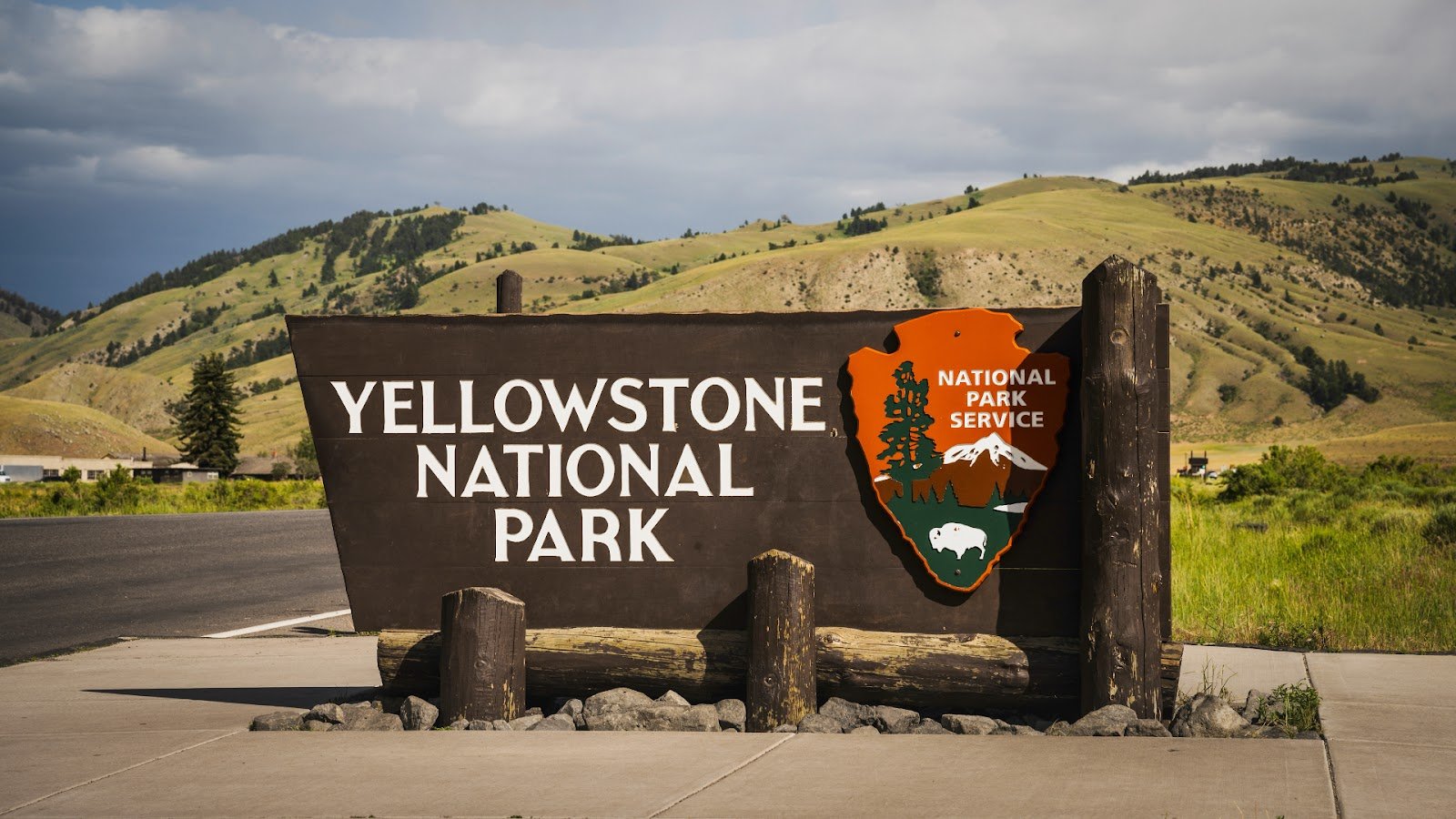
Yellowstone is famous as the world’s first national park, and it’s one of America’s biggest. This huge place sits right on top of a supervolcano. It’s also a UNESCO World Heritage Site. Picture over two million acres packed with natural drama. See geysers shooting steam, hot springs in wild colors, and bison herds wandering valleys.
It feels like a giant science lab you can walk through. Visiting? You won’t miss Old Faithful’s regular show, the dazzling Grand Prismatic Spring, or spotting wildlife in Lamar Valley.
Find waterfalls roaring and canyons cutting deep. Yellowstone keeps surprising you at every turn. It’s one park showing Earth’s raw power and beauty. Pretty wild, right?
Geothermal Marvels: Earth’s Living Laboratory
Old Faithful & Upper Geyser Basin
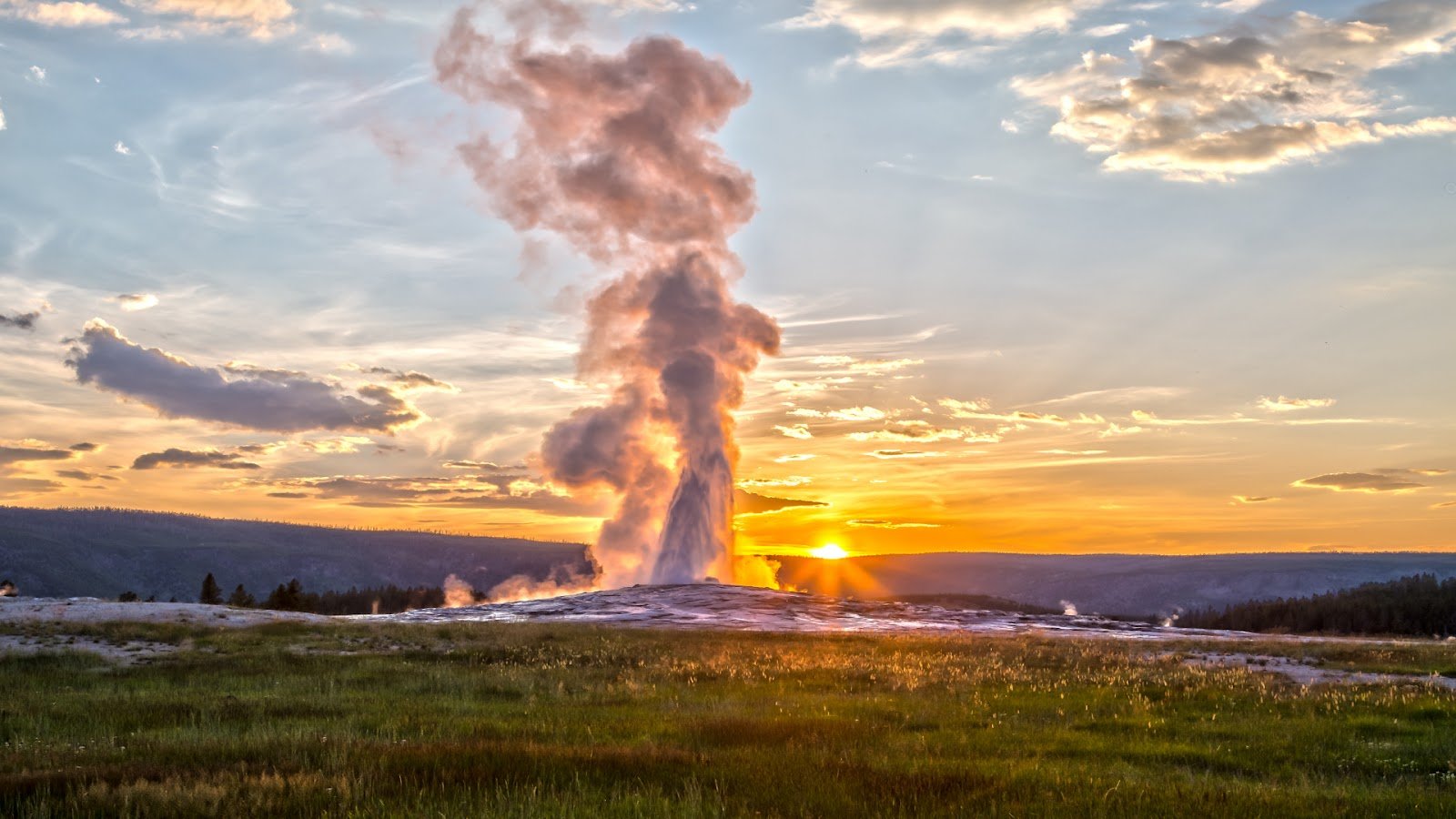
Old Faithful lives up to its name. This famous geyser erupts roughly every 90 minutes, shooting boiling water high into the air. It’s incredibly reliable, making it easy to plan your visit.
Just check predicted eruption times posted nearby or at visitor centers. Watching it burst upward never gets old – crowds gather for every show.
But don’t leave after seeing Old Faithful! The surrounding Upper Geyser Basin is packed with other activity. Miles of accessible boardwalk trails let you wander safely among hundreds of thermal features.
You’ll see:
- Colorful hot springs bubbling beside the path
- Smaller geysers spitting steam unexpectedly
- Historic Old Faithful Inn and Lodge nearby for food or rest
Wandering this basin feels like exploring another planet. Take time to explore beyond the main attraction.
Grand Prismatic Spring (Midway Geyser Basin)
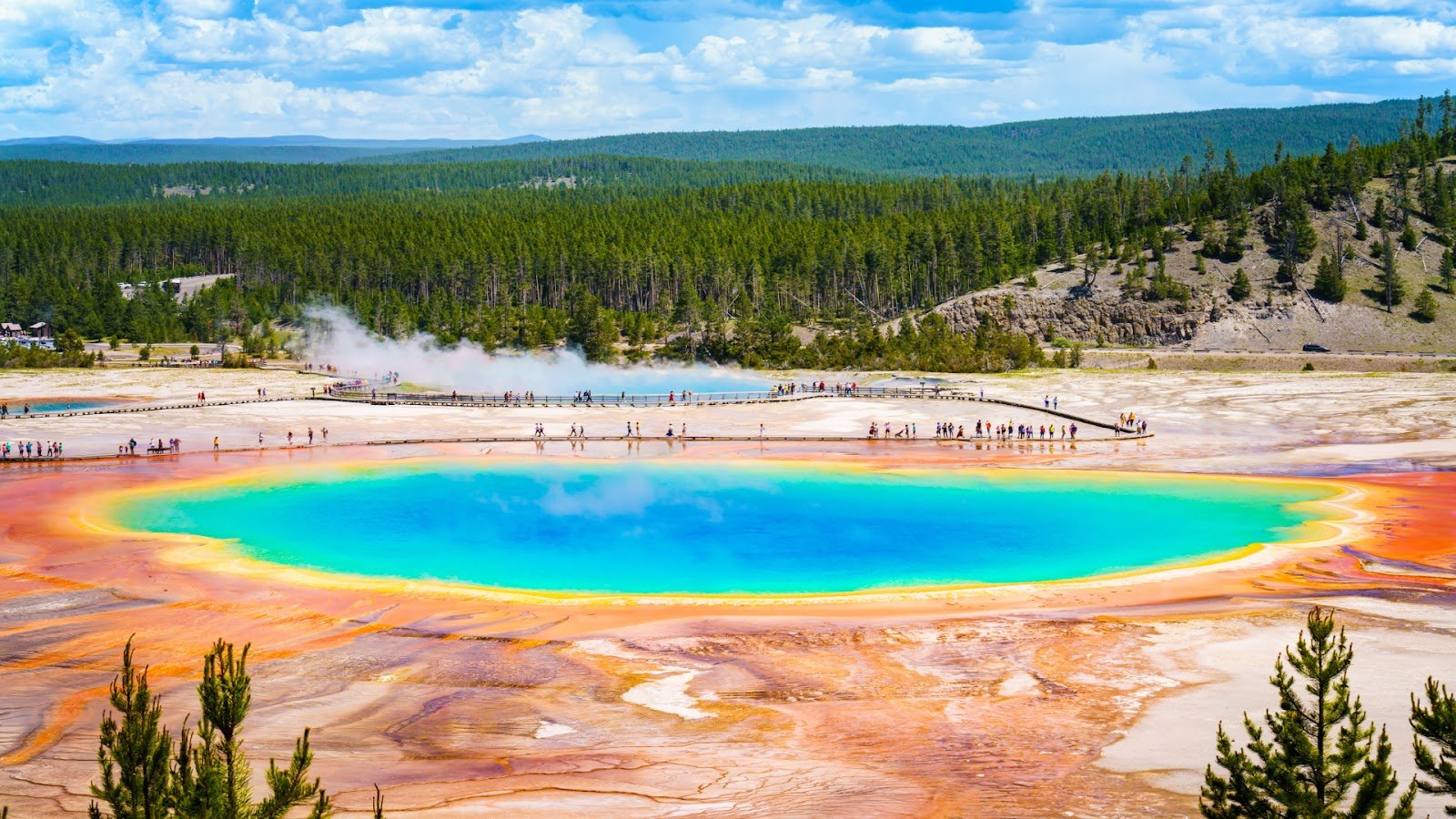
Grand Prismatic Spring is Yellowstone’s most photographed thermal feature for good reason. This massive pool is America’s largest hot spring. Its striking colors create a vivid rainbow effect across steaming water.
Deep blues center gives way to greens, oranges, and fiery red edges. These colors come from heat-loving bacteria living around mineral-rich edges.
Ground level views are impressive but foggy. For that iconic photo perspective, take Fairy Falls overlook trail. This short hike offers an elevated view revealing the spring’s full, breathtaking scale and color bands.
Back in Midway Geyser Basin itself:
- Walk boardwalks above other large, steaming pools
- See Excelsior Geyser Crater pouring into Firehole River
- Feel heat and smell distinct sulfur scents
Seeing Grand Prismatic up close or from above is unforgettable.
Mammoth Hot Springs
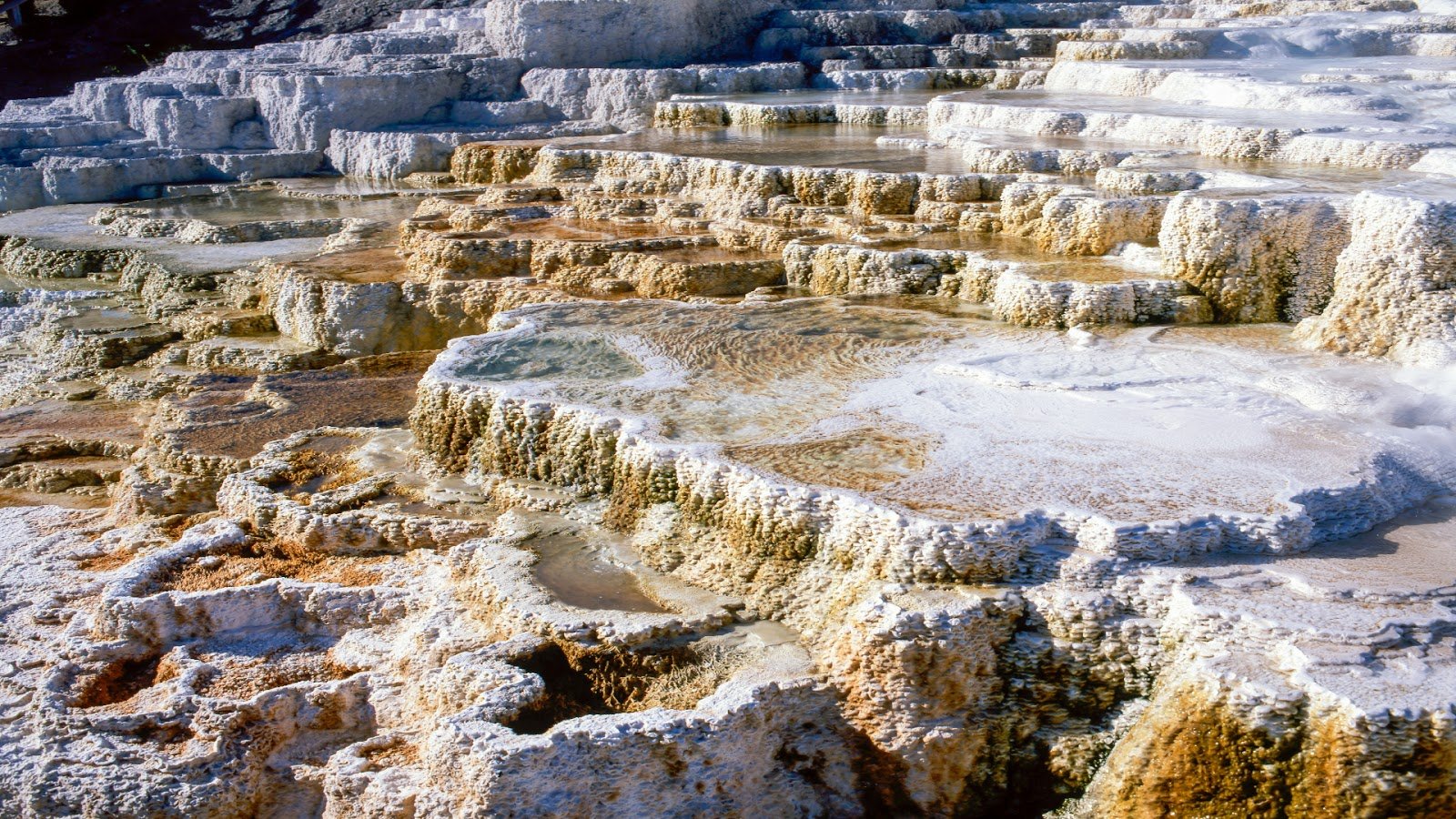
Mammoth Hot Springs offers a distinct experience compared to Yellowstone’s geyser basins. Here, hot water travels up through ancient limestone, building huge terraces of white and beige travertine.
These formations resemble a natural staircase or frozen waterfalls. Fascinatingly, they never stay the same. Mineral-rich water flows steadily, building new layers as older sections dry out. This constant change reshapes the area all year.
Wooden boardwalks wind through main terrace sections, bringing you right up close. Areas near Fort Yellowstone and park headquarters are also simple to reach.
Key things to see here include:
- Minerva Terrace: Intricate, actively forming cascades.
- Palette Spring: Known for colorful bacterial mats.
- Orange Spring Mound: A large, distinct cone-shaped deposit.
- Liberty Cap: A dormant, 37-foot tall hot spring cone.
It’s a quieter, more sculptural thermal area worth exploring.
Norris Geyser Basin
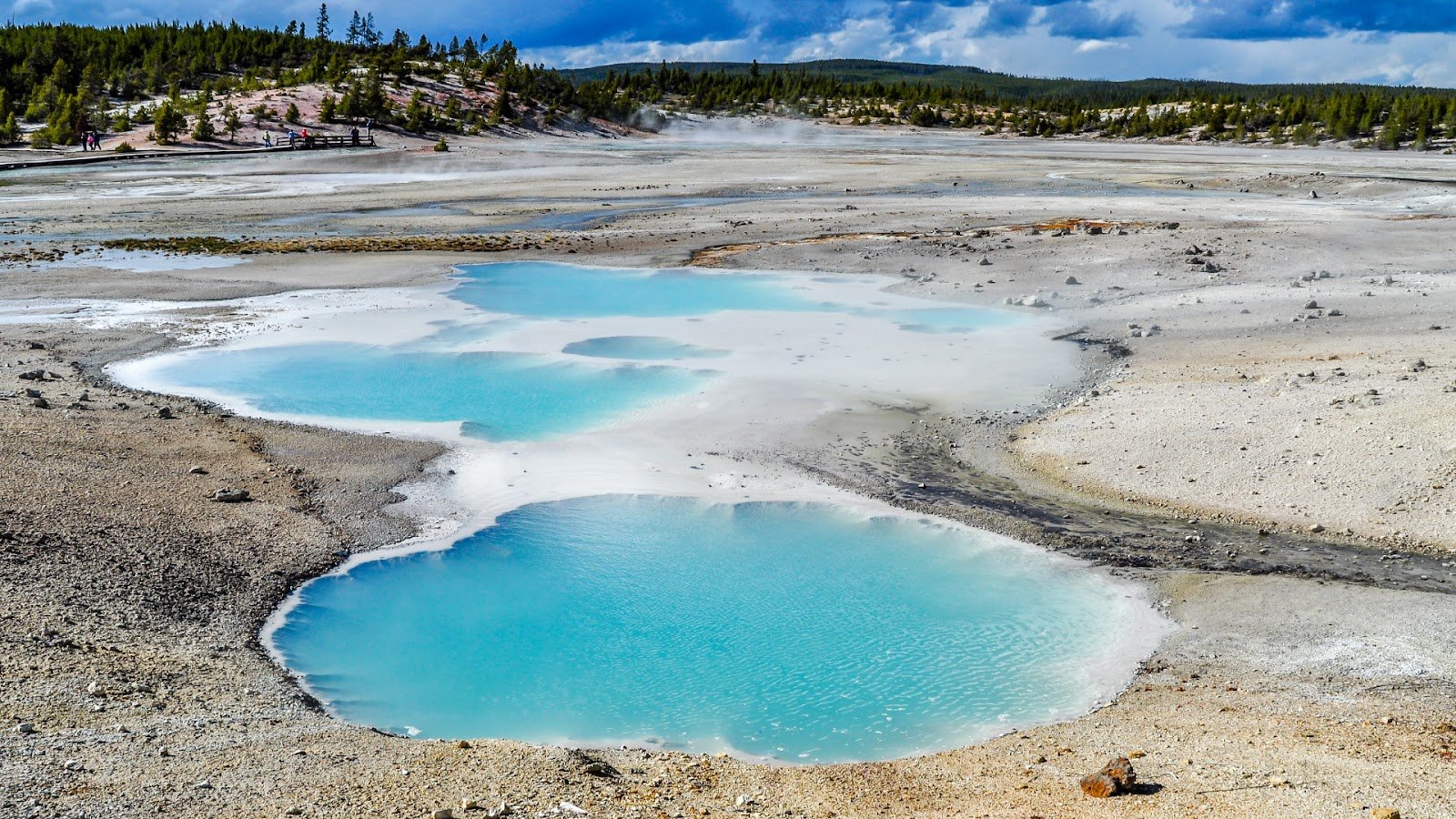
Norris is Yellowstone’s hottest and most dynamic thermal area. Temperatures here can reach near boiling underground. Things change fast – new geysers appear, pools alter color, and activity levels shift daily. This constant change makes every visit unique.
Steamboat Geyser steals much attention here. It holds the title of world’s tallest active geyser. When Steamboat erupts, it sends water soaring over 300 feet high!
These massive eruptions are rare and unpredictable, though. Patience is required if you hope to witness one.
Exploring Norris involves walking extensive boardwalk trails through two main sections:
- Back Basin: Forested loops featuring Steamboat and other geysers.
- Porcelain Basin: Open, starkly beautiful area with milky pools and constant steam vents.
Expect surprises. Pools might be bubbling violently one day and calm the next. It rewards those who linger.
Mud Volcano Area
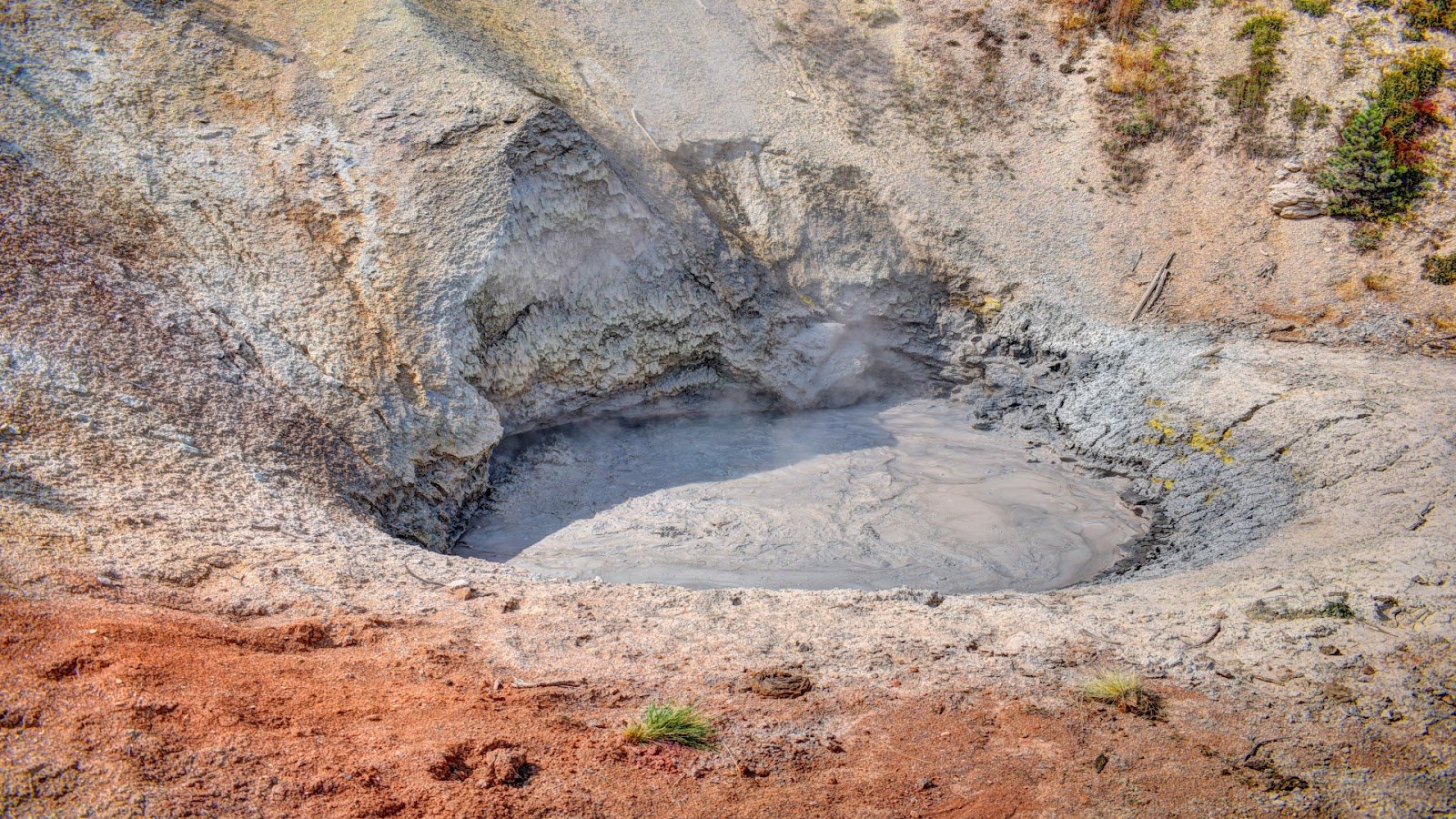
This area shows a rougher, more intense side of Yellowstone’s thermal features. Forget clear geysers – think swirling acidic pools and bubbling mud pots. Water mixing with volcanic gases creates high acidity.
This dissolves rock into thick, churning clay. Expect noise and a powerful sulfur smell. It’s a raw encounter.
Short boardwalks let you safely see these active features up close.
Two main attractions stand out:
- Dragon’s Mouth Spring: A cave-like opening where loud bubbling and hissing steam burst rhythmically, creating an impressive sound.
- Mud Volcano: A large, churning pool of gray mud constantly splattering its sides.
While less colorful than other basins, Mud Volcano Area feels powerfully alive. It’s compact and easily walkable, showing Yellowstone’s diverse geothermal energy.
Wildlife Hotspots: America’s Serengeti
Lamar Valley (“America’s Serengeti”)
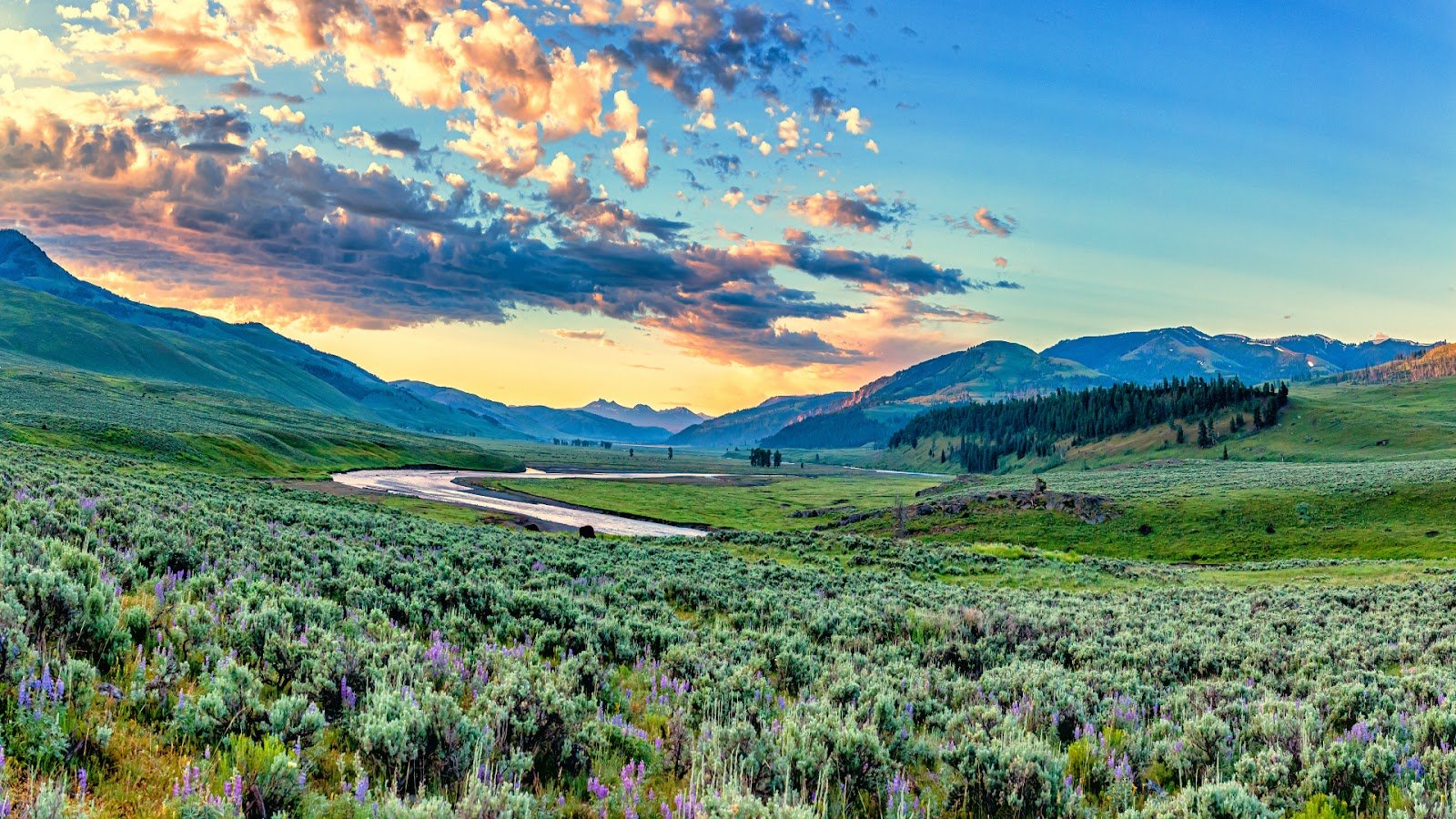
Lamar Valley lives up to its “America’s Serengeti” nickname. This open valley in Yellowstone’s northeast is a top spot for wildlife. Large groups of bison roam freely across big grasslands.
Dawn and dusk offer your best chance to see action, when predators like wolves and grizzlies often hunt.
Get ready for a genuine wild feel. Bring good binoculars or a spotting scope – animals can be far away. Patience is key.
Key species regularly seen include:
- Bison: Large herds grazing near rivers.
- Wolves: Packs sometimes visible on hillsides.
- Grizzly Bears: Often foraging in distance.
- Coyotes & Eagles: Frequently seen too.
It’s a place where wild Yellowstone feels truly vast. Pull over safely, set up your scope, and watch nature unfold.
Hayden Valley

Hayden Valley forms Yellowstone’s central wildlife corridor. This big valley traces the Yellowstone River, opening up to wide views and lots of animal sightings. Similar to Lamar Valley, it’s a prime viewing country. Big bison herds gather here often, grazing close to water or moving across roads.
Your best shot at seeing action comes early or late in the day. Coyotes patrol the grasslands hunting, while bald eagles circle overhead looking for fish. Pullouts along the road let you stop safely and watch.
Keep an eye out for:
- Bison: Huge groups, especially by the river.
- Coyotes: Watch for them trotting across meadows.
- Bald Eagles: Check trees or the sky above the river.
- Waterfowl: Ducks and geese hang out along the Yellowstone River.
It’s a scenic place where rivers, valleys, and wildlife come together perfectly. Bring binoculars for spotting things farther off.
Dramatic Landscapes & Waterfalls
Grand Canyon of the Yellowstone
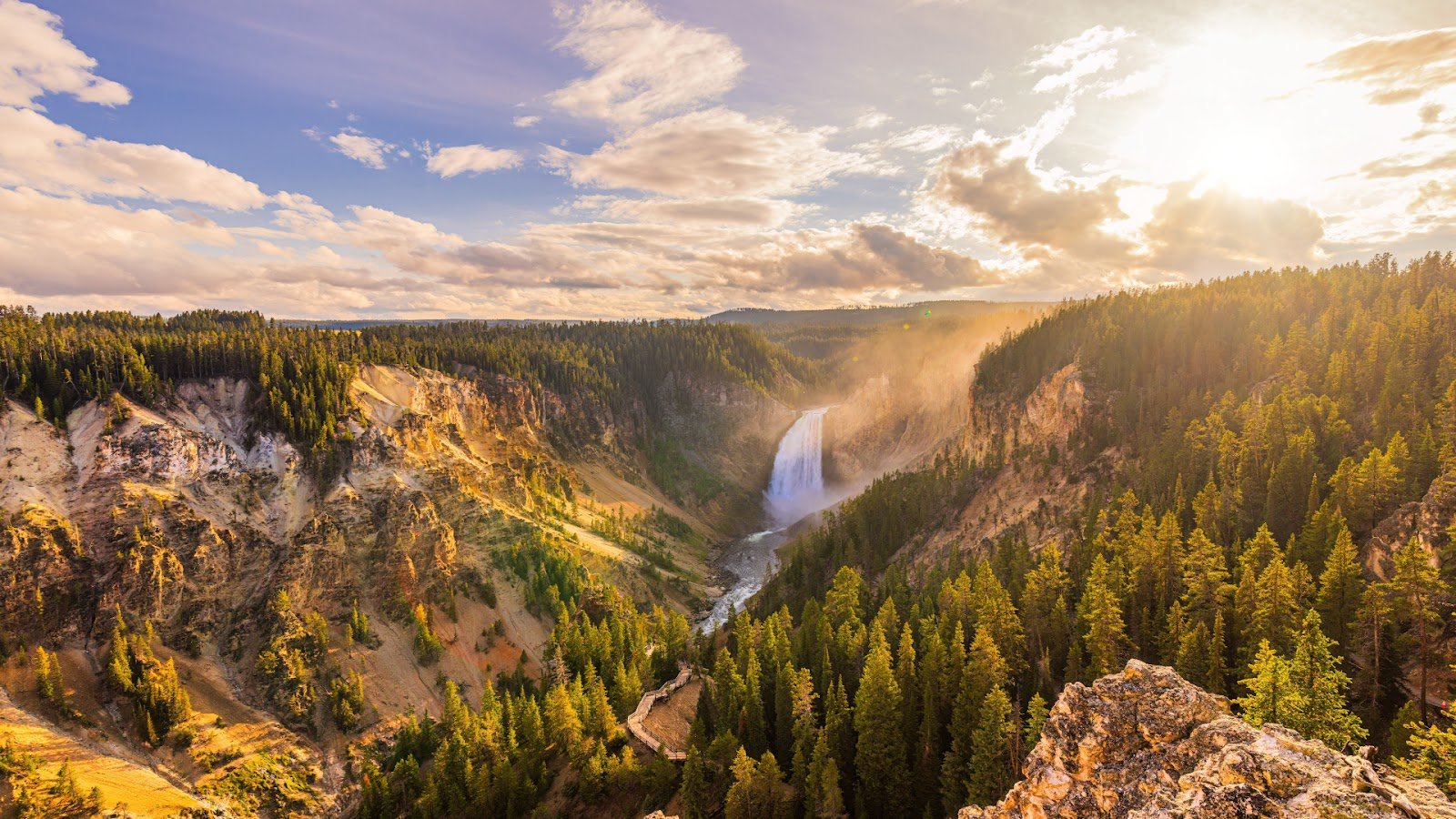
Yellowstone River carved this dramatic canyon, showing off park’s raw power over rock. Steep cliffs wear yellow, pink, and orange shades from minerals. Two huge waterfalls dominate the scene.
Artist Point gives you that classic postcard shot. You stare straight across at Lower Falls dropping 308 feet into the gorge. It’s an unforgettable sight.
Want more intensity? Brink of Upper Falls puts you right on the edge. Feel the thunder as water crashes just feet below. Prepare to get misty!
Key spots cover:
- Lower Falls: Higher drop, more powerful flow (308 feet).
- Upper Falls: A bit shorter but wider cascade (109 feet).
- Multiple Views: Drives along North Rim and South Rim offer different looks.
It blends wild beauty with raw power. Catch these angles.
Yellowstone Lake
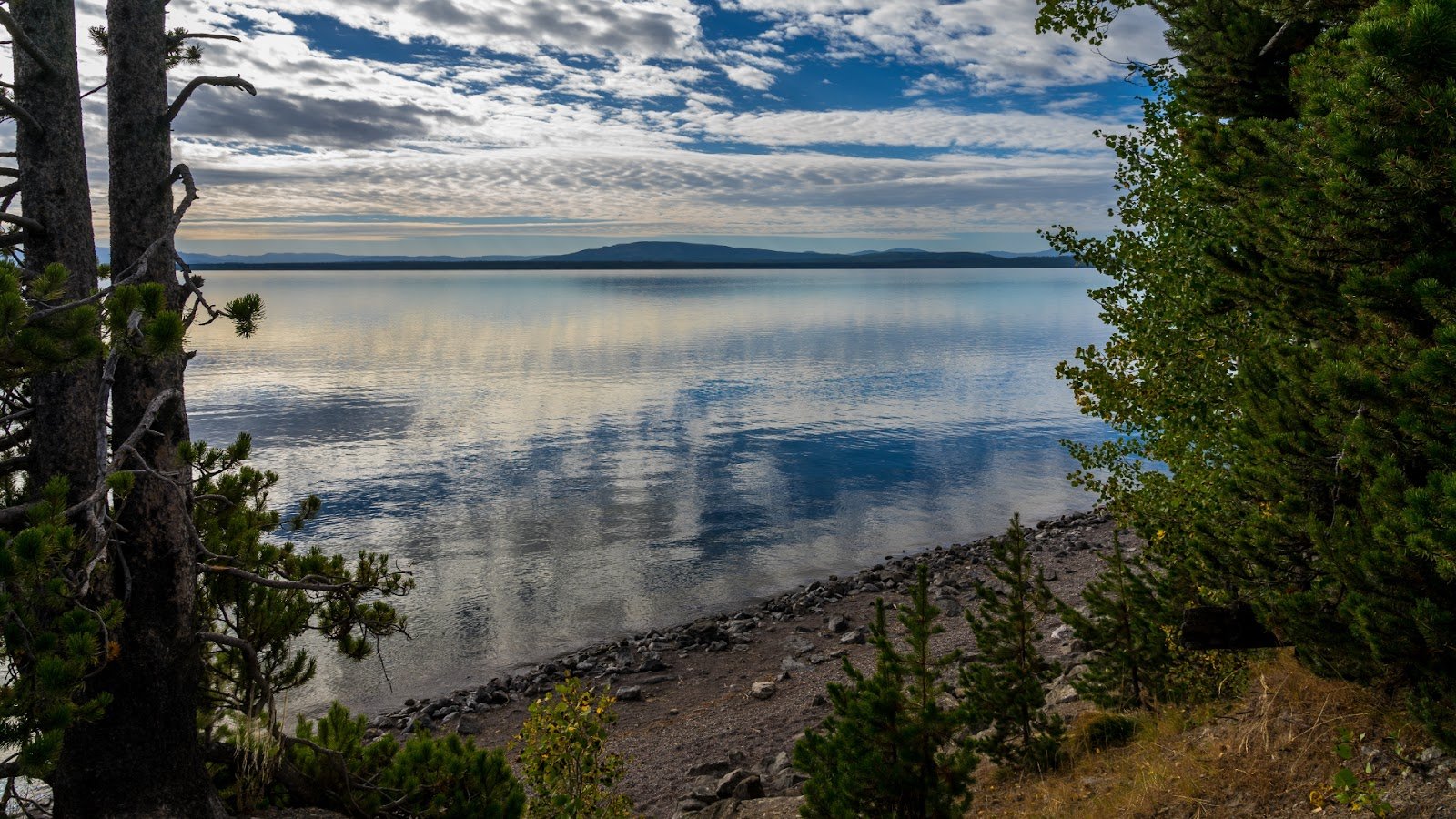
Yellowstone Lake is a huge expanse of water sitting pretty high in the Rockies. As North America’s largest high-elevation lake, it dominates the park’s southeast. Its deep, chilly waters and scenic shoreline create a different Yellowstone vibe – more serene than steamy.
This lake isn’t just for looking at. Visitors enjoy getting out on its surface.
Popular water activities include:
- Kayaking & Boating: Paddle calm bays or take a guided boat tour from Bridge Bay Marina.
- Fishing: Cast a line for native cutthroat trout (check park regulations first).
- Historic Lake Hotel: Relax on its famous sun porch overlooking the water.
Don’t ignore the shore! West Thumb Geyser Basin sits right on the lake edge, mixing thermal features with waterfront views. It’s a refreshing contrast to inland geyser basins.
Tower Fall
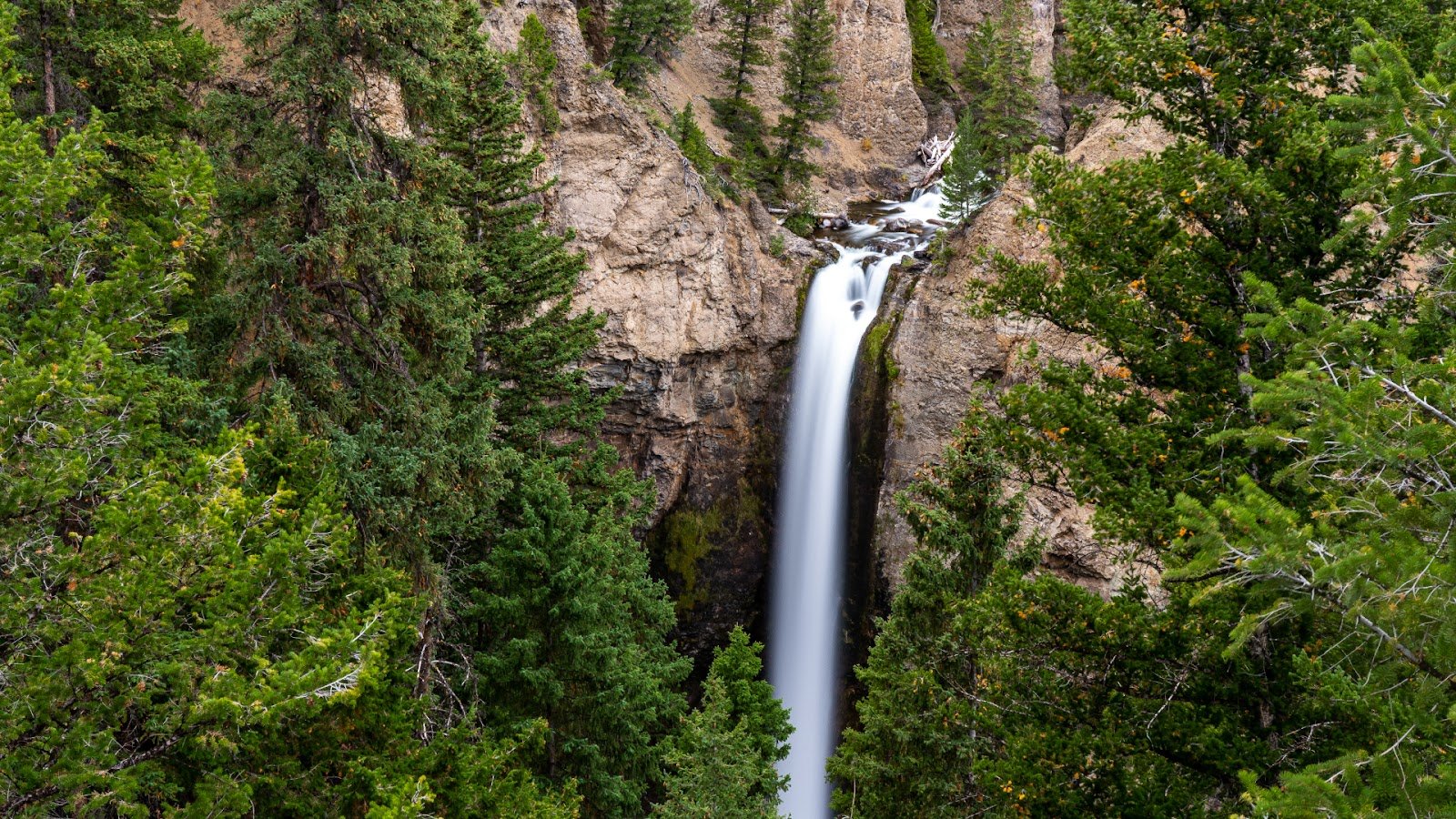
Tower Fall offers one of Yellowstone’s easiest waterfall stops. This 132-foot cascade plunges gracefully past dramatic volcanic rock columns. Those dark basalt towers give the falls its distinct name. Access is straightforward – it’s right off the main road between Canyon Village and the park’s northeast entrance.
A short, paved path leads directly to a primary overlook. From here, you get a clear view of the waterfall framed by ancient rock formations. You’ll feel cool mist and hear constant rushing water.
Key features include:
- Main Overlook: Quick view of entire falls and towers.
- Basalt Columns: Volcanic rock pillars surrounding the drop.
- Proximity to Roosevelt Lodge: Historic area nearby for food or rest.
It’s a simple but rewarding sight. Combine it with a visit to Lamar Valley just up the road.
Underrated Gems & Seasonal Highlights
West Thumb Geyser Basin
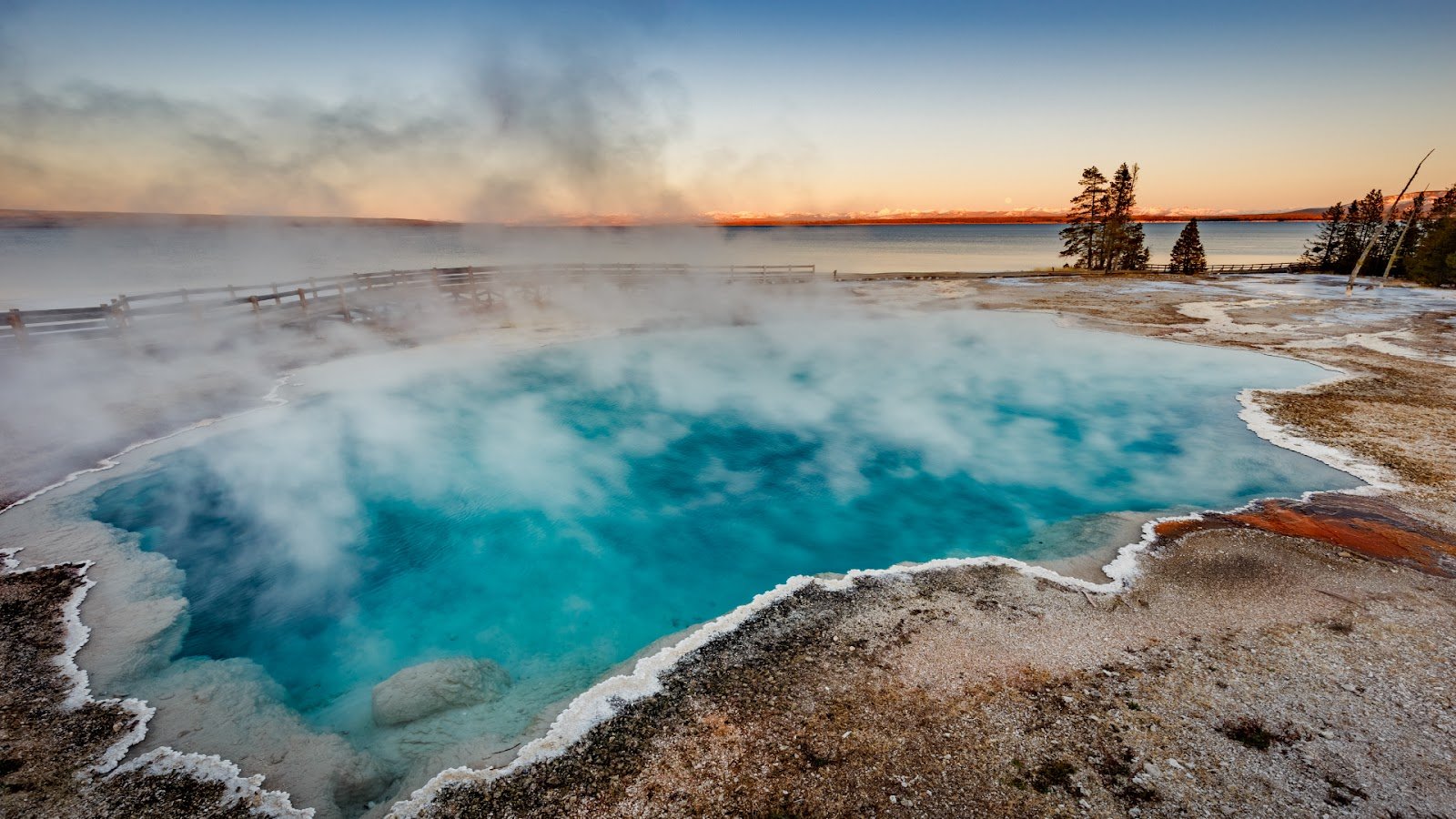
West Thumb adds a neat twist to Yellowstone’s thermal areas. It sits right on the shore of huge Yellowstone Lake, letting steaming features interact with cold lake water. This unique location creates a striking contrast you won’t see inland. Boardwalks wind past pools and geysers just feet from the lake’s edge. It’s smaller than other basins but packs visual interest.
Key features here include:
- Abyss Pool: A strikingly deep, vividly blue hot spring.
- Fishing Cone: Historic geyser where anglers once cooked fish right in its vent.
- Lakeshore Views: Thermal pools reflecting mountain scenery across the water.
Steam often drifts over the lake surface on cool mornings. Seeing geothermal activity blend with a vast alpine lake makes West Thumb memorable. It’s an easy stop along the southern loop road.
Gibbon Falls

Gibbon Falls is one of Yellowstone’s easiest waterfall stops. This scenic cascade drops about 84 feet into Gibbon River canyon. You’ll find it right beside the main road between Norris Geyser Basin and Madison Junction. No hiking is needed.
Pullouts along the road offer safe, quick viewing. Just park your car and walk a few steps to sturdy railings. Feel cool mist and hear constant water roar from above.
Key things to know:
- Roadside Access: Immediately visible from parking areas.
- 84-Foot Drop: Water tumbles over rocky ledges.
- En Route to Norris: Perfect quick break during drives.
It’s a handy, refreshing sight without requiring extra time. Enjoy views of forested canyon below the falls before continuing your journey.
Practical Tips for Visitors
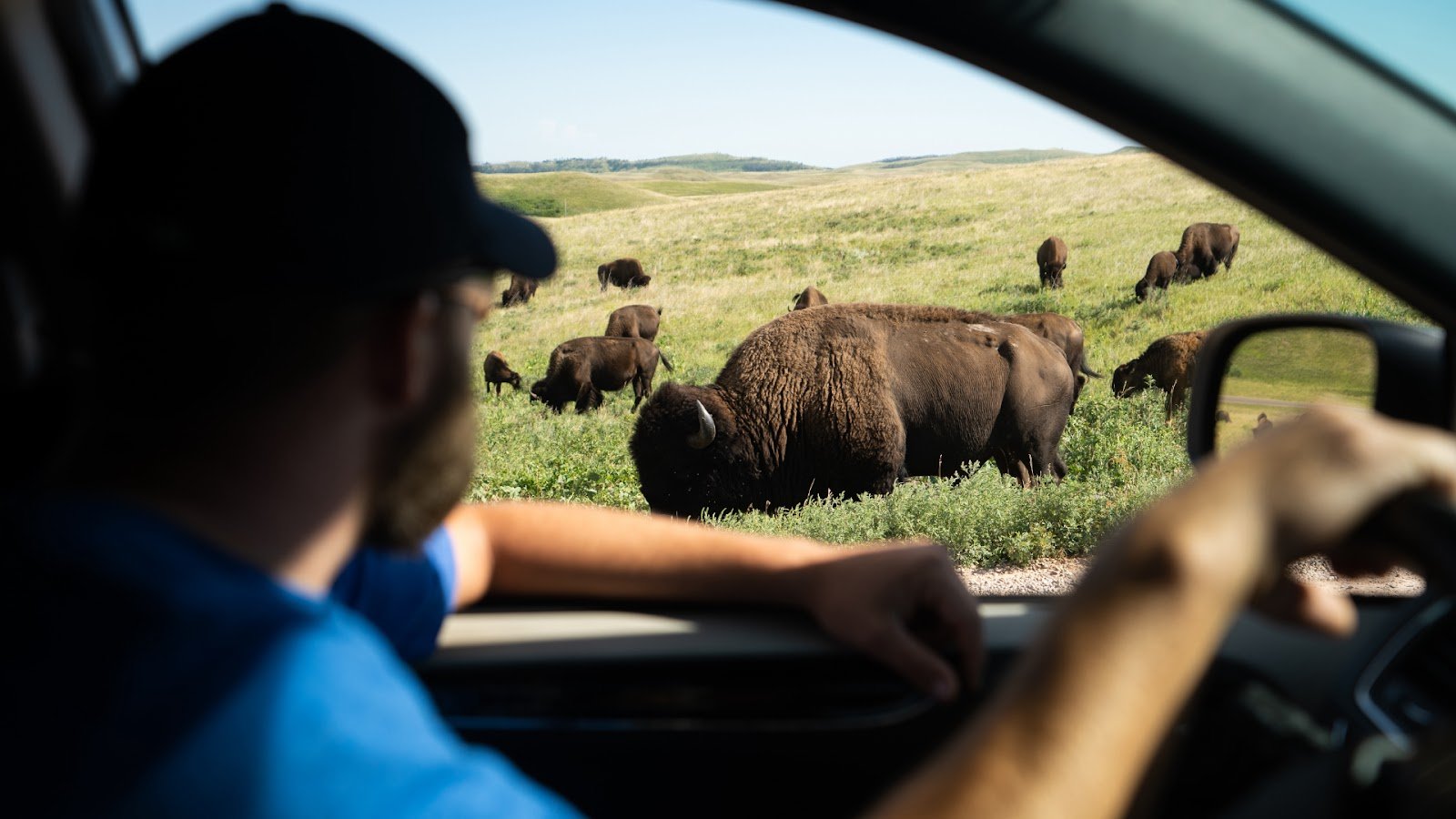
Planning really helps your Yellowstone trip run smoother. Try arriving early morning or later afternoon; popular spots get packed midday. Visiting in spring or fall means fewer crowds than summer. Remember, park roads might close without much notice. Get the park’s official app for maps and live updates.
Safety is top priority here. Always stick to boardwalks in thermal areas – ground near hot springs is thin and dangerous. If you’re hiking, carry bear spray and know how to use it.
Give wildlife lots of space – never walk toward animals. Booking where you’ll stay is key. Reserve lodges or campgrounds 6 to 12 months ahead, especially for summer – they fill up fast.
To recap:
- Arrive early/late or visit spring/fall.
- Use the park app; roads can close.
- Stay on boardwalks; carry/know bear spray; keep distance from wildlife.
- Book lodgings 6–12 months early.
Smart planning means a safer, less crowded visit.
Conclusion: The Call of the Wild
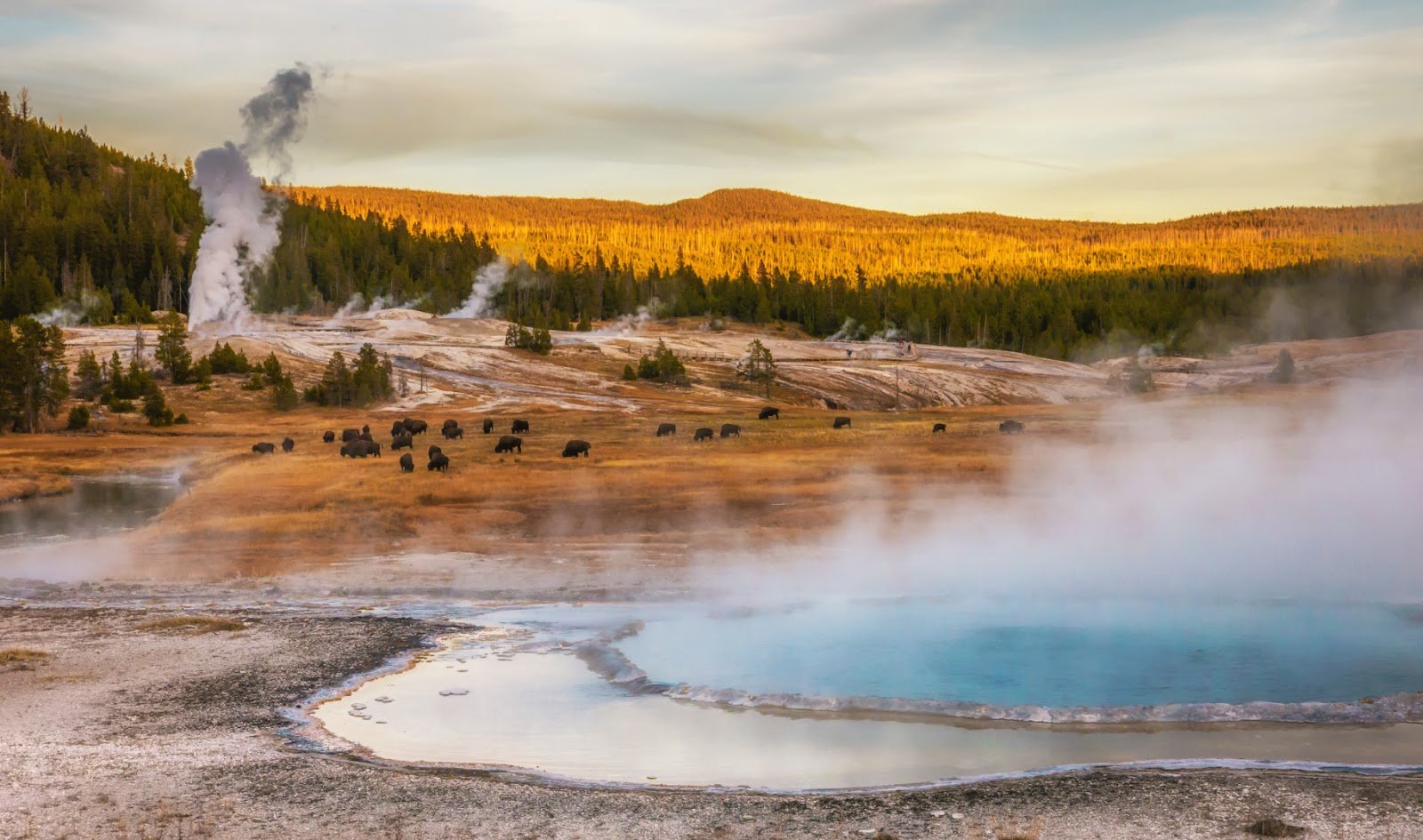
Yellowstone stands out. You just can’t find erupting geysers, huge wandering bison herds, and waterfalls cutting deep canyons all in one place like this. It’s Earth’s raw power, plain and simple. Fire, water, and wild animals share this space in a rough, natural way.
A visit plugs you straight into that wild core. See ground steaming, hear wolf howls echo across valleys, feel spray from powerful falls. This park isn’t just about looking; it’s a real meeting with untamed nature.
Being the planet’s first national park, Yellowstone matters. It’s a living display of Earth’s amazing energy and beauty. That special mix of geothermal features, huge animal homes, and striking water scenes makes an experience every nature lover should have. Yellowstone’s wild pull is strong and sticks with you.

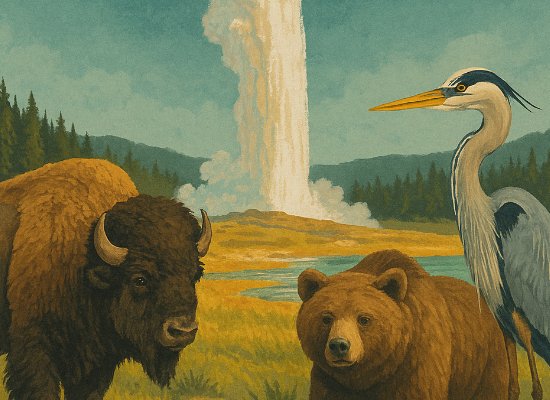
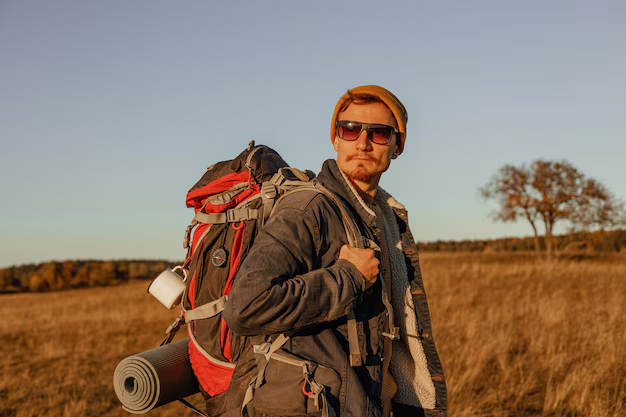



0 Comments